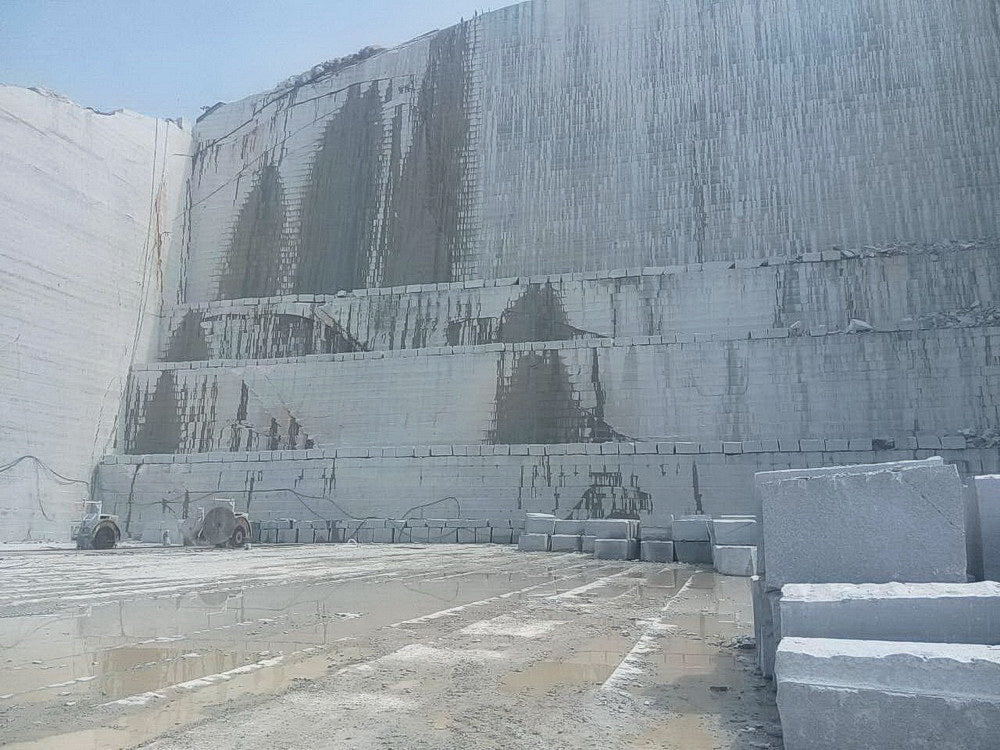Exploring the Hidden Midst of Granite Quarrying: Unveiling Nature's Work of art
The globe of granite quarrying is a realm where nature's old processes meet human resourcefulness in a symbiotic dancing that has formed landscapes and people for centuries. From the intricate geological developments that birth this marvelous rock to the careful techniques and tools employed in its removal, the journey right into granite quarrying is a testament to the unified conjunction between guy and nature. As we start to decipher the layers of this sector, we are met a tapestry of ecological considerations, artistic endeavors, and international implications that bid us to explore even more the hidden depths of this all-natural masterpiece.

Geological Development of Granite
Granite, a kind of igneous rock, develops deep within the Earth's crust via an intricate procedure of cooling and solidification. The cooling procedure can take millions of years, enabling for the advancement of large mineral grains that offer granite its unique structure and sturdiness.
Geologically, granite is identified as a felsic invasive rock, implying it is rich in silica minerals and forms from lava that intrudes right into existing rock formations. This invasive development procedure adds to granite's grainy structure and high compressive strength, making it a preferred option for building and construction and building functions. Due to its elegance, toughness, and resistance to warm and scrapes, granite has come to be an in-demand material for kitchen counters, flooring, and attractive aspects in both residential and commercial setups.
Quarrying Methods and Tools
Using advanced equipment and precise techniques, quarrying operations remove granite from natural down payments with effectiveness and accuracy. The procedure starts with the recognition of appropriate granite down payments through geological studies. Once a feasible site lies, the removal phase begins. Ruby wire saws are generally used to reduce with the granite, as they offer precision reducing without creating damage to the stone. These cord saws are operated by experienced professionals who meticulously navigate the cuts to guarantee optimal return from the quarry.
Large excavators and loaders are then used to get rid of the cut granite blocks from the quarry. Overall, the mix of innovative machinery and proficient labor is important in click site the quarrying procedure to essence granite successfully while protecting its quality.
Environmental Influence and Sustainability
With the raising emphasis on environmental awareness in commercial methods, the granite quarrying sector is under analysis for its effect on environments and natural sources. Quarrying for granite can have considerable environmental effects, including habitat damage, soil disintegration, and water pollution. The removal of granite typically involves using dynamites to break the rock, bring about noise and air contamination. Additionally, the heavy equipment used in quarrying operations consumes big quantities of energy, adding to greenhouse gas discharges.
To reduce these ecological impacts, sustainable Source quarrying methods are being created. Companies are applying steps such as reforestation programs, water recycling systems, and dirt reductions strategies to reduce their environmental impact. In addition, some quarries are currently utilizing renewable resource resources to power their procedures, decreasing reliance on nonrenewable fuel sources.
Creativity in Granite Sculpting
The intricate procedure of changing raw granite right into stunning works of art requires outstanding skill and workmanship. granite quarries in south africa. Granite sculpting is a thorough art kind that requires patience, creativity, and an acute understanding of the stone's homes. Sculptors should possess a deep gratitude for the natural charm of granite and the capability to imagine and remove the hidden artistry within it
Creativity in granite sculpting involves a collection of exact steps. The artist starts by choosing the perfect granite piece, thinking about factors such as shade, veining, and structure.
The outcome of granite sculpting is an impressive work of art that showcases the artist's skill and the fundamental elegance of the stone itself. Whether it's a stunning statue, an intricate fountain, or an in-depth relief sculpting, granite sculptures stand as testaments to human creative thinking and the enduring attraction of natural products.
Global Value of Granite Industry
Playing a crucial function in building and construction and architectural click this link jobs worldwide, the granite industry offers as a cornerstone in the worldwide economy. With its adaptability, resilience, and visual allure, granite has ended up being a recommended choice for a vast range of applications, including kitchen counters, flooring, monoliths, and facades. The industry not only supplies employment possibility however additionally drives financial growth via exports and regional intake.

Additionally, the granite industry plays an important duty in sustainable development initiatives by promoting liable quarrying methods and purchasing green innovations. As the demand for all-natural rock remains to increase, the international value of the granite industry in forming urban landscapes and maintaining cultural heritage can not be overemphasized.
Final Thought
In final thought, the granite quarrying sector plays an important duty in showcasing nature's work of art. From its geological formation to the artistry in sculpting, granite continues to hold worldwide relevance.